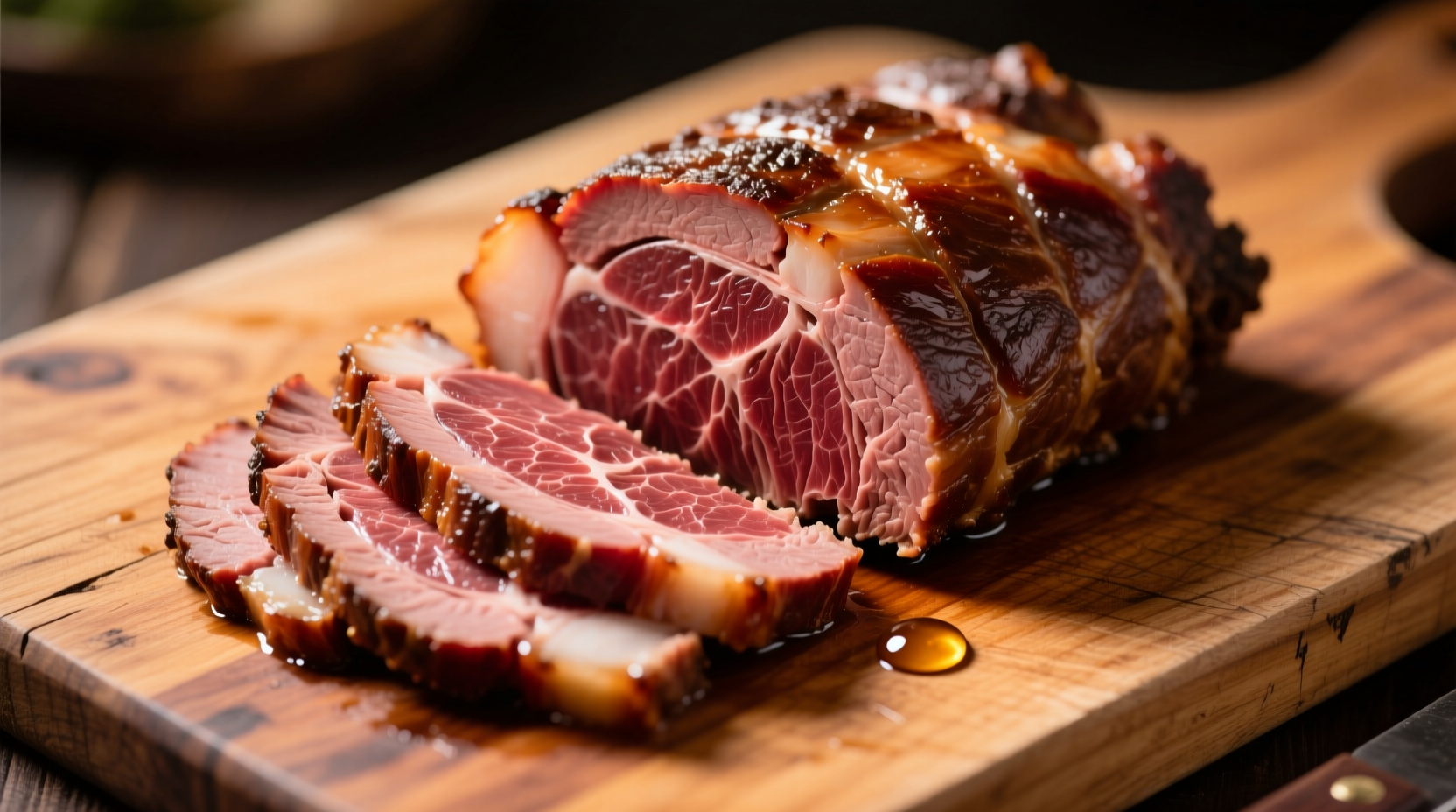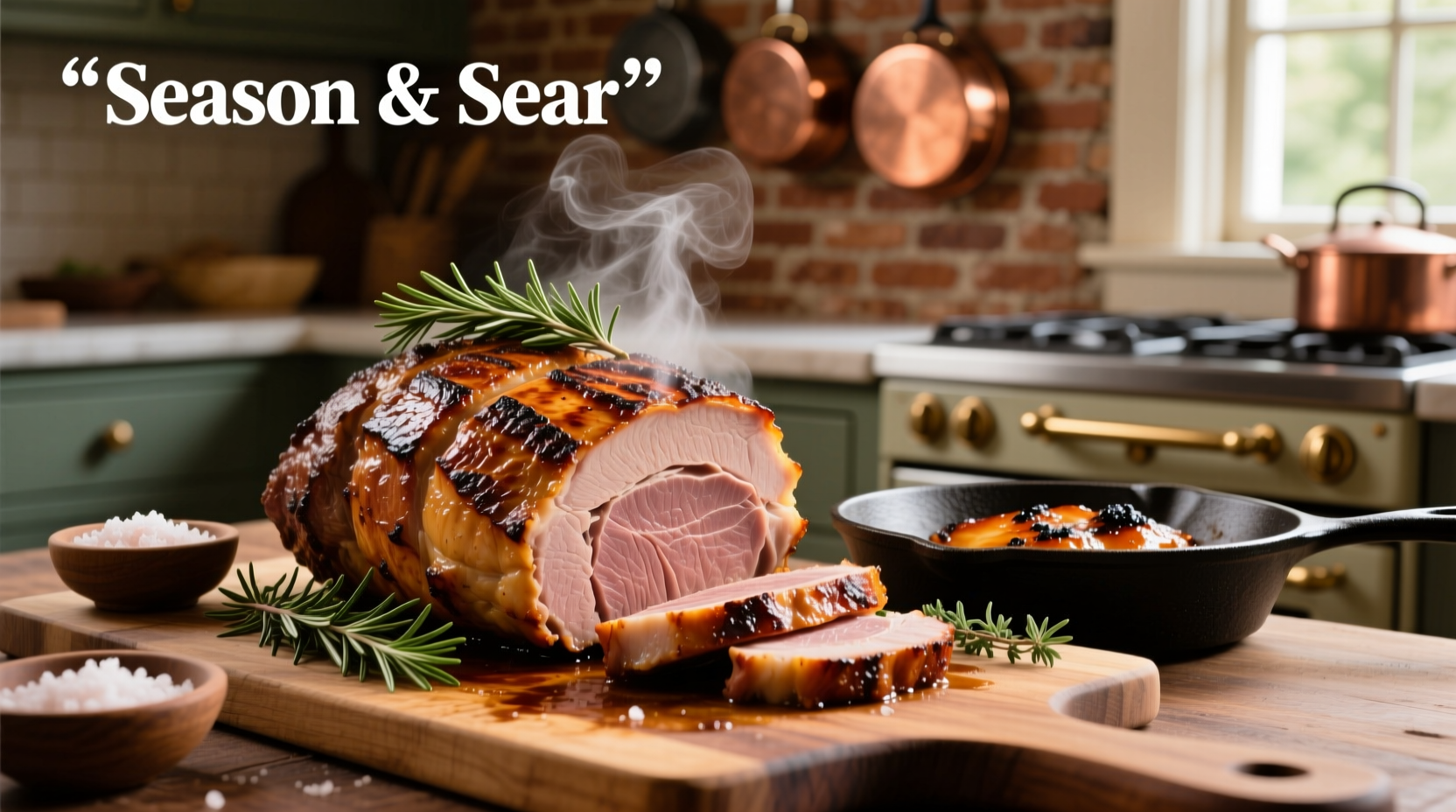Perfectly cooked bottom round roast requires low-and-slow cooking at 275°F (135°C) for 3-4 hours until internal temperature reaches 130-135°F (54-57°C) for medium-rare, followed by 20 minutes resting. This tough cut needs moisture, proper slicing against the grain, and patience to transform into tender, flavorful meat.
Why Bottom Round Roast Challenges Home Cooks (And How to Win)
Bottom round roast comes from the well-exercised hindquarters of the cow, making it lean but tough with dense muscle fibers. Unlike chuck roast, it lacks marbling, so improper cooking guarantees chewy results. The USDA Meat and Poultry Hotline confirms 130-135°F is the safe minimum for medium-rare beef, but reaching this temperature slowly is key for tenderizing this cut.
Preparation: Setting Up for Success
Before heating your oven, address these critical preparation steps:
Selection and Trimming
Choose a 3-4 pound roast with even thickness. Trim excess fat to 1/4 inch—enough for flavor but not so much it causes uneven cooking. Remove the silver skin (tough connective tissue) using a thin, sharp knife held at a 30-degree angle.
Dry Brine for Maximum Flavor Penetration
Rub 1 teaspoon kosher salt per pound of meat 12-24 hours before cooking. This process, validated by USDA Food Safety and Inspection Service research, enhances moisture retention and seasoning penetration far better than same-day salting.
Cooking Method Comparison: What Actually Works
| Cooking Method | Temperature | Time for 3lb Roast | Best For | Texture Result |
|---|---|---|---|---|
| Low-and-Slow Oven | 275°F (135°C) | 3-4 hours | Most reliable results | Tender, juicy slices |
| High-Heat Sear + Roast | 450°F (232°C) | 45-60 minutes | Experienced cooks | Risk of toughness |
| Slow Cooker | Low setting | 8-10 hours | Hands-off cooking | Falls apart (shredding) |
| Sous Vide | 130°F (54°C) | 24-48 hours | Precision cooking | Perfectly even |
Professional kitchens have shifted toward low-and-slow methods for bottom round roast over the past decade. Where chefs once relied on high-heat roasting (which often dried out this lean cut), modern understanding of collagen breakdown shows temperatures between 250-275°F allow connective tissues to dissolve without squeezing out moisture.
Step-by-Step: Foolproof Bottom Round Roast
Equipment Setup
Preheat oven to 275°F (135°C). Place roast on a wire rack inside a roasting pan. Insert an oven-safe meat thermometer into the thickest part, avoiding fat pockets. Add 1 cup beef broth to the pan bottom—this creates steam that prevents drying.
Cooking Timeline
- 0-90 minutes: Roast undisturbed. The meat will initially drop in temperature as moisture evaporates
- 90-180 minutes: Collagen begins breaking down. Check thermometer hourly
- 180-240 minutes: Target 130-135°F (54-57°C) for medium-rare. Do not exceed 140°F (60°C)
Critical Doneness Indicators
Don't rely solely on time. Use these visual and tactile cues:
- Thermometer: 130-135°F (54-57°C) for medium-rare
- Texture: Should feel like the base of your thumb when touching index finger to thumb
- Juices: Clear pink, not red
- Probe test: Thermometer should slide in with little resistance
The Non-Negotiable Resting Phase
Transfer roast to a cutting board, tent loosely with foil, and rest for 20 minutes. During this time, internal temperature will rise 5-10°F (carryover cooking), and juices redistribute. Cutting too soon releases all moisture onto your board. The American Meat Science Association confirms proper resting improves juiciness by up to 40%.
Slicing: Where Many Cooks Fail
This is make-or-break for bottom round roast. Identify the direction of the muscle fibers (they run lengthwise in this cut), then slice perpendicular across them in 1/4-inch slices. Cutting with the grain creates long, chewy strands; slicing against the grain shortens fibers for tender bites. Use a sharp carving knife and steady pressure—don't saw back and forth.

Troubleshooting Common Problems
Problem: Roast is still tough
Solution: Return to oven and cook 30-60 minutes longer. Bottom round needs time for collagen to fully dissolve. Check every 15 minutes after 3 hours. If using a thermometer, ensure it's reading correctly—calibrate it in ice water (should read 32°F/0°C).
Problem: Dry or stringy texture
Solution: You likely cooked above 140°F (60°C) or didn't rest properly. For future roasts, lower oven temperature to 250°F (121°C) and add more liquid to the pan. Consider using a sous vide for precise temperature control.
Problem: Uneven cooking
Solution: Roasts with irregular shapes benefit from "tying" with kitchen twine to create uniform thickness. Alternatively, separate thicker portions and add them to the oven later in the process.
When Time Is Limited: Accelerated Method
For last-minute cooking, use the reverse sear method: Cook at 275°F until 120°F internal temperature, then sear in 450°F oven or cast-iron skillet for 5-7 minutes per side. This works best with thinner cuts under 2 inches thick. Note: Results won't match low-and-slow perfection but are significantly better than traditional high-heat roasting.
FAQ: Bottom Round Roast Essentials
Can I cook bottom round roast in a slow cooker?
Yes, but with limitations. Slow cookers work well for shredded applications (like sandwiches) but won't yield sliceable roast. Cook on low for 8-10 hours with 1 cup liquid. For sliceable results, oven roasting at 275°F is superior as it maintains the roast's structural integrity while tenderizing.
Why is my bottom round roast always tough?
Bottom round roast contains dense muscle fibers and connective tissue that require slow cooking at low temperatures (250-275°F) to break down. High-heat methods cause proteins to seize up before collagen dissolves. Most failures occur from cooking too hot (above 300°F) or not long enough (less than 3 hours for a 3lb roast).
How do I store and reheat leftovers properly?
Store slices in their cooking juices in an airtight container for up to 4 days. To reheat without drying: place slices in a baking dish with 1/4 cup broth, cover tightly with foil, and warm at 250°F until internal temperature reaches 120°F (about 15-20 minutes). Never microwave, as it makes the meat rubbery.
What's the difference between bottom round roast and eye of round?
Bottom round comes from the outside of the hind leg and contains more connective tissue, making it better for slow roasting. Eye of round is the inner portion—leaner, more uniform, and better suited for quick cooking methods like London broil. Bottom round has superior flavor potential when cooked properly but is more challenging for beginners.











 浙公网安备
33010002000092号
浙公网安备
33010002000092号 浙B2-20120091-4
浙B2-20120091-4